In the dynamic world of eCommerce, eBay stands out with a market capitalization of $30.3 billion and monthly visits of 1.21 billion. As a leading player in the online marketplace sector, eBay has shown resilience and adaptability, navigating economic shifts and maintaining a competitive edge with a steady increase in annual net revenue.
At Greenice, our extensive experience across various marketplaces equips us to provide expert guidance for businesses looking to enter or expand in the online marketplace space. Leveraging lessons from industry giants like eBay, we are ready to help you navigate the complexities of marketplace development to achieve lasting success.
Let’s find out how to make an auction website like eBay!
How a multi-vendor website like eBay works
eBay, founded in 1995 by Pierre Omidyar, changed the concept of buying and selling online as it introduced one of the first platforms to use an auction-style sales model. This innovation enabled individuals and businesses worldwide to participate in an open-market environment, simulating traditional auction houses but with a global reach.
How eBay works
There are a few essential processes:
- Listing an item: Sellers begin by listing an item, setting a starting bid and choosing the duration of the auction, typically ranging from 1 to 10 days. eBay allows for a variety of listing options, including "Buy It Now" prices that let buyers bypass the auction process by paying a predetermined amount.
- Bidding process: Buyers can browse through various categories to place bids on items of interest. As the auction nears its close, a flurry of bidding activity can occur, often leading to the final price significantly exceeding the initial bid.
- Winning and paying: The highest bidder at the end of the auction wins the item and is responsible for paying the seller directly through eBay's secure payment systems, which support a variety of payment methods including PayPal, credit cards, and others.
How eBay makes money
eBay mainly makes money from different types of fees, along with some other sources of income. Over the last ten years, its revenue has been pretty steady, reaching $10.1 billion in 2023.

Main revenue sources:
- Listing fees: Each item listed may incur a fee, especially if a seller exceeds the free listing limit eBay provides monthly. Additional fees may apply for listings that require greater visibility or additional features.
- Final value fees: eBay collects a percentage of the sale price once an item is sold, which varies depending on the category of the item sold. This fee is calculated based on the total amount of the sale, including shipping costs.
- PayPal fees: When transactions are processed through PayPal (an eBay subsidiary until 2015), additional fees are levied, including transaction fees which are a percentage of the total sale price plus a fixed fee per transaction, depending on the seller’s country.
Additional revenue sources:
- Promoted listings: Sellers can pay extra to have their items highlighted as promoted listings, which increases the visibility of their products on the platform.
- Subscription services: eBay offers various subscription levels to sellers who operate at higher volumes, providing them with additional tools and reduced fees in exchange for a monthly subscription fee.
- Advertisements: eBay generates revenue from on-site advertisements displayed to buyers, which include both product-related ads and general advertisements.
.png)
eBay's model has been emulated by numerous other online marketplaces but remains distinguished by its vast scale and the dynamic nature of its auction system. This system not only facilitates buyer and seller transactions but also creates a competitive and engaging shopping experience. By continuously evolving its platform and revenue strategies, eBay strives to maintain its prominent position in the global eCommerce landscape.
Strong and weak sides of eBay
eBay is a well-established online marketplace that has been a major player in the eCommerce world for decades. Its longevity and reputation offer significant advantages but also come with several drawbacks.
.png)
Pros of eBay:
- Global reach: eBay's vast user base provides sellers with immediate access to a global market.
- Established reputation: The platform's long-standing presence builds trust among buyers, making it a preferred choice for many.
- Smart expansion: eBay has strengthened its ecosystem with key acquisitions like PayPal, enhancing transaction security and trust.
- Pioneer in the field: As one of the first online auction platforms, eBay gained early market dominance, establishing strong brand recognition and a loyal user base.
Cons of eBay:
- High fees: Sellers face substantial costs, with fees for listing beyond the initial free quota, a high final value fee, and charges for additional listing features.
- Limited shipping assistance: Unlike some competitors, eBay does not provide full logistical support, leaving sellers to manage shipping complexities on their own.
- Seller protection issues: The platform is often perceived as favoring buyers, which can leave sellers exposed to fraudulent claims and returns.
- Competition: The intense competition makes it difficult for new sellers to gain visibility and grow their business on eBay.
- Restricted customer access: Sellers cannot access customer data directly, which limits their ability to engage and offer personalized deals.
- Lack of personalization: eBay's limited use of personalization can result in a less engaging user experience compared to platforms that use advanced technology to tailor the shopping experience.
Despite its impressive reach and trusted name, eBay's platform presents several challenges that can impact sellers' profitability and operational ease.
But it’s actually a great thing as your platform can tackle these problems and offer a much better user experience.
Who are eBay competitors?
At the time when eBay was launched, it did not have a competitor. It had to make its way as a pioneer and every new step was a pure experiment that could be either accepted or rejected by the users. Nowadays, there are more than 10 large (like Amazon, Craigslist, Etsy, Rakuten, eBid, etc.) and dozens of smaller auction websites.
This segment of the business is diversified by industries:
|
Industry |
Description |
Examples |
|
eCommerce |
Selling different kinds of goods like clothes, electronics, books, handicrafts, etc. |
eBay, Amazon, Craigslist, Etsy, Rakuten, eBid |
|
Automotive |
Auctions for selling and buying cars |
Salvagebid, Сarsontheweb, Autobidmaster |
|
Finance and insurance |
Auctions for loans, insurance services, and other financial deals |
Honcho, IAA-auctions |
|
Art |
Paintings, sculptures, prints, photographs, media art, ceramics, decorative art, collectibles, etc. |
Artsy, Christies, Invaluable |
|
Real Estate |
Auctions for any property |
Iamsold, Realtybid, Hubzu |
|
Logistics |
Rent for ships, machines, equipment, etc. |
Troostwijkauctions, Shipperoo, Loadexpress |
|
Food and restaurants |
Restaurants, cafes, bistro, restaurant equipment, supply, furniture, etc. |
Restaurantauctioncompany, Theauctionmil, PCI auctions |
|
Luxury goods |
Sells luxury items, jewelry, watches, rare wines, furniture, precious stones, etc. |
Worthy, Wilberrys, Christies, Invaluable |
|
Charity |
A platform for nonprofits to market their auction items |
IfOnly, Auctria, OneCause |
Despite the popularity and ever-growing profits of eBay, other famous and even new eCommerce auctions can still make for serious competition.
Steps to build a website like eBay
Everything needs a plan, especially when you start a new business. Here’s a detailed breakdown of each step to create a multi-vendor marketplace like ebay, illustrating how a development team like Greenice operates from the initial planning phase to the post-launch maintenance.
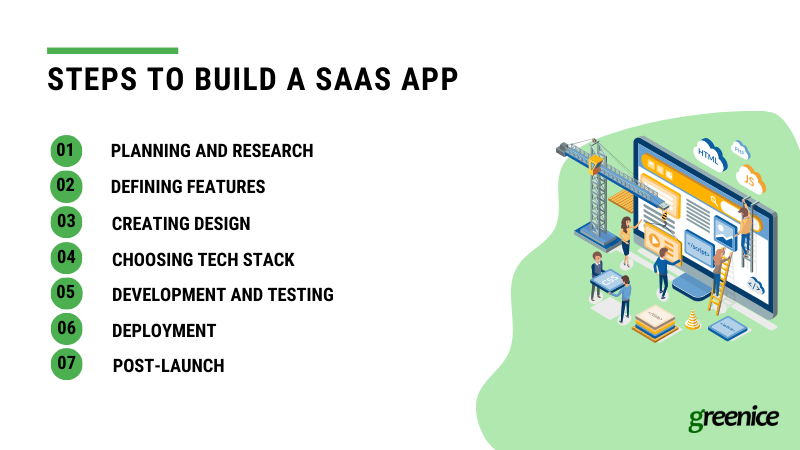
1. Plan and research
Planning and research is usually conducted during the Discovery phase. This phase is essential to lay a solid foundation for the project and ensure that the subsequent development is aligned with business goals and market needs.
- Define target audience and niche: The process begins with a thorough identification of the potential users and their specific requirements. The development team engages in demographic research, conducts user surveys, and analyzes market trends to clearly define the audience. This step helps in understanding who the users are, what they value, and the types of products they are likely to be interested in bidding on or selling. This understanding aids in tailoring the website’s features and interface to meet the specific needs of its users.
- Analyze competitors: Next, a detailed analysis of direct competitors, such as eBay and Mercari, is performed. This involves examining these platforms’ user interfaces, feature sets, functionality, and customer reviews. The purpose is to identify what these platforms are doing well and where there might be gaps or opportunities for differentiation. This competitive analysis helps in positioning the new auction platform to leverage competitors' weaknesses and capitalize on unmet market demands.
- Develop a business model: Finally, the business model is carefully crafted. This step involves selecting the most suitable revenue streams for the platform, which could include options such as transaction fees, listing fees, subscriptions, or advertising revenues. The choice of revenue model directly affects the platform’s design and operational strategy and is crucial for ensuring the platform’s long-term sustainability and profitability.
By the end of the discovery phase, all these insights and data are compiled into a comprehensive Software Requirements Specification (SRS) document. This document outlines detailed project requirements and specifications, serving as a blueprint for the development team. It includes everything from functional requirements and system architecture to user interface design and security measures. The SRS ensures that every team member understands the project scope and requirements fully, providing a clear path forward for development phases and helping mitigate risks associated with project misunderstandings or misalignments.
2. Defining features
Defining the features of an auction website is a crucial step that involves outlining both the core functionalities required for a Minimum Viable Product (MVP) and the advanced features that can be added later to enhance the platform. This step ensures the auction website operates effectively and meets the expectations of its users.
MVP features: The MVP should include the essential features necessary for the auction platform to function from the outset:
- User registration: Secure sign-up processes for users to create accounts, which are necessary for tracking bidding history, managing bids, and maintaining security.
- Product listings: A system that allows sellers to list items with detailed descriptions, categories, starting prices, and images.
- Bidding mechanism: The core of the auction site, this feature must support various auction types such as English, Dutch, and Vickrey auctions, each catering to different seller and buyer preferences.
- Secure payment processing: Integrating reliable payment gateways to facilitate smooth transactions while ensuring security and trust.
- Basic search and filtering: Enabling users to easily find items through keywords, categories, or custom filters.
- Notifications: Alert systems to keep users informed about auction updates, bid statuses, and other important information.
- Simple review system: Allowing buyers and sellers to rate each other and provide feedback, which helps build community trust.
Advanced features: Once the MVP is successfully tested and launched, the following advanced features can be integrated to expand the platform’s capabilities and enhance user experience:
- "Buy It Now" options: Giving buyers the ability to bypass the auction process and purchase items immediately at a fixed price.
- Live auction capabilities: Enabling real-time bidding to create a dynamic and engaging user experience.
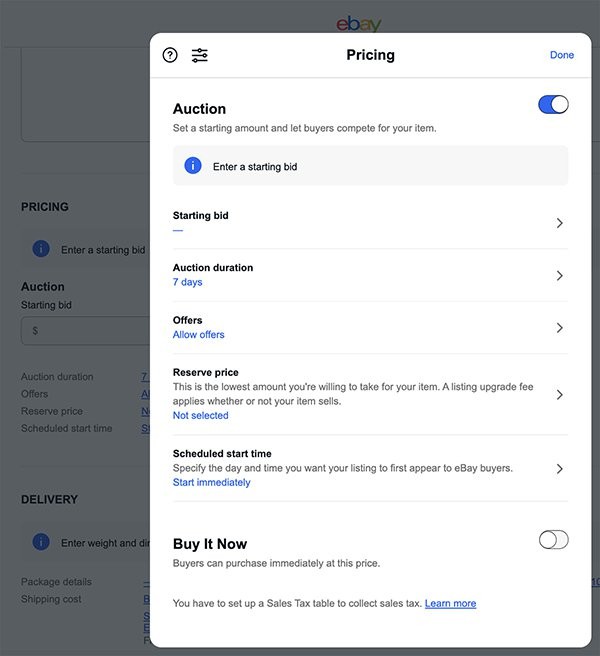
- Escrow services: Adding an extra layer of payment security, ensuring that funds are only released when both parties are satisfied.
- AI-powered recommendations: Utilizing machine learning to analyze user behavior and preferences to recommend items, thereby personalizing the shopping experience.
Essential elements for auction functionality: Incorporating different types of auctions and ensuring that the site accommodates various bidding styles are fundamental for attracting a diverse user base. These include:
- Types of auctions: Offering a range of auction types like English, Dutch, Vickrey, Double, Japanese, and Sealed Bid auctions, which cater to different strategic preferences and market needs.
- Comprehensive seller and SuperAdmin dashboards: Tools for sellers and administrators to manage auctions, view performance analytics, and oversee site operations effectively.
- Resolution center: A dedicated platform feature for resolving disputes, managing transaction issues, and maintaining high levels of user satisfaction.
By methodically defining these features and integrating the essential elements of successful auction sites, the development team can ensure that the auction platform not only meets the initial market requirements but is also poised for future growth and scalability.
3. Creating design
Design transforms the conceptual framework of an auction website into practical, user-friendly interfaces. This phase involves several key steps:
- Wireframing and prototyping: Initially, the team (or business owner himself) creates wireframes to outline the website's structure, followed by interactive prototypes using tools like Figma. These prototypes help visualize user interactions and facilitate early feedback to refine the design.

- UI/UX design: This stage focuses on crafting a visually appealing and intuitive user interface. The design team selects colors, typography, and layout that align with the brand’s identity while ensuring the navigation is user-friendly.
Also, it could be a really nice touch if your designs adhere to accessibility standards such as WCAG to ensure the site is usable by people with disabilities, incorporating features like color contrast ratios and screen reader support.
4. Choosing tech stack
Selecting the right technology stack is pivotal in building a robust auction website that meets both current needs and future growth. The tech stack includes the backend, frontend, and infrastructure components, each playing a distinct role in the application’s development and operation.
- Backend: The backend is the server-side of the website where core functionalities and business logic are processed. It's responsible for managing user interactions, data processing, and database management. Technologies such as PHP/Laravel, Python, and JavaScript (Node.js) are popular choices.
- Frontend: The frontend is the client-side part of the website that users interact with directly. It includes everything the users see on their screens, such as the layout, navigation, and how they interact with the application. Frontend frameworks like React.js, Angular, or Vue.js are selected based on their efficiency in building dynamic, high-performing user interfaces.
- Infrastructure: The infrastructure involves the underlying platforms that host and run the application. Cloud services like AWS or Google Cloud are chosen to ensure the application can scale as user demand grows. They provide robust, scalable, and secure cloud computing environments that can handle everything from hosting databases to running application servers and handling user requests. WebSocket is implemented for real-time functionalities such as live bidding, which requires immediate server-client communication to update bid prices without refreshing the web page.
5. Development and testing
This step employs the Agile methodology, which is more flexible and adaptable than the traditional Waterfall model. Agile allows for continuous integration and feedback, enabling the project to adapt quickly to changes and evolving requirements.
The development process is organized into sprints—short, focused phases that allow for regular assessment and adjustment of the project’s direction based on stakeholder feedback and testing results. This iterative approach facilitates ongoing improvement and ensures the product remains aligned with user needs.
As soon as the first iteration is ready, there goes the testing which is crucial to ensure the auction platform is reliable, secure, and performs well across all devices. It usually includes the following processes:
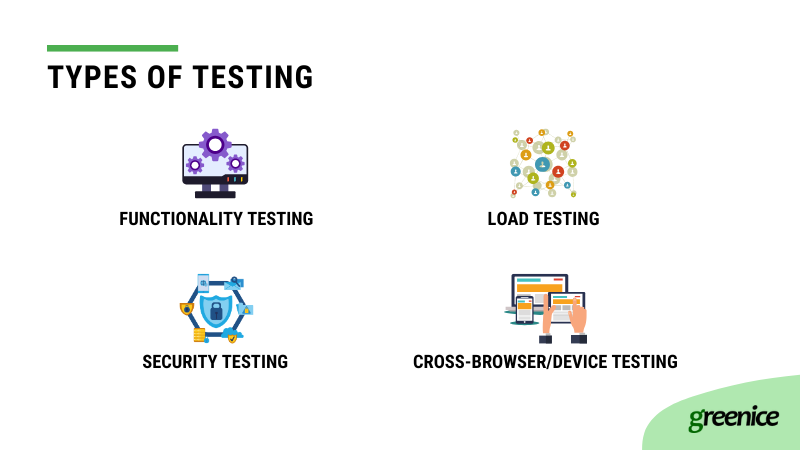
- Functionality testing: Verifies that every feature operates correctly and meets specified requirements.
- Load testing: Ensures the platform can handle expected traffic and remains stable under heavy use.
- Security testing: Protects against vulnerabilities, safeguarding transactional data and user information.
- Cross-browser/Device testing: Confirms that the platform offers a consistent user experience on different browsers and devices, ensuring accessibility and ease of use.
This strategic combination of Agile development practices and comprehensive testing ensures the auction website is not only functional and secure but also resilient and user-centric from the outset.
6. Deployment
This step involves two key stages: the Beta Launch and the Live Deployment. Each serves a distinct purpose in ensuring the platform is robust and ready for public use.
- Beta launch: This initial rollout targets a select group of users who are invited to use the system under real conditions. The beta phase is essential for practical, real-world testing as it often reveals issues that might not have been detected during earlier testing phases. User feedback during this stage is invaluable, providing insights into user experience, functionality, and overall system performance. It helps the development team identify and resolve any critical issues before a wider release.
- Live deployment: Following the beta phase and after incorporating feedback and making necessary modifications, the website undergoes full public launch. This stage is crucial for monitoring the platform’s performance as it scales to accommodate a broader user base. The team closely watches for any scalability issues, ensuring the platform can handle increased load and traffic without performance degradation. Continuous monitoring and immediate troubleshooting during this phase help stabilize the platform, ensuring a smooth and reliable user experience for all.
By carefully managing these deployment stages, the development team can ensure that the auction platform is well-optimized, secure, and capable of meeting the demands of its users from day one.
7. Post-launch
This phase includes proactive marketing efforts and ongoing maintenance to ensure the platform not only aligns with current market standards but is also prepared for future expansions and challenges.
Effective marketing strategies are crucial after the website's launch to build a strong user base and maintain visibility in a competitive market. These strategies include:
- SEO (Search Engine Optimization): Optimizing website content to rank higher in search engine results, making it easier for potential users to find the platform.
- Pay-per-click ads: Utilizing paid advertisements on search engines and social media platforms to drive immediate traffic to the site.
- Social media marketing: Engaging with users on platforms like Facebook, Instagram, Twitter, and LinkedIn to build a community, promote auctions, and provide customer service.
- Strategic partnerships: Forming alliances with relevant businesses or influencers that can help reach broader audiences or add credibility to the platform.
Continuous support and enhancement of the website are essential to ensure it remains efficient, secure, and user-friendly:
- Software updates: Regularly updating the platform to incorporate the latest software enhancements and technologies that improve functionality and user experience.
- Security patching: Vigilantly monitoring for any security vulnerabilities and applying patches as necessary to protect user data and prevent breaches.
- Adding new features: Based on user feedback and market trends, new features are developed and integrated into the website. This not only helps in keeping the platform relevant and competitive but also addresses users' evolving needs.
- Performance optimization: Continuously analyzing the website’s performance and making adjustments to handle increased traffic and data as the platform grows.
This comprehensive approach in the post-launch phase helps the auction website not only to thrive in a dynamic market environment but also ensures it adapts to changing technologies and user expectations, thus supporting long-term business growth and sustainability.
How much does it cost to make a website like ebay?
Developing an auction website, such as one designed for selling electronic gadgets through Dutch auctions where bidding decreases over time, involves detailed planning and execution. In such setups, users register, pay a participation fee, and can purchase items at decreasing prices until they choose to hit the "Buy" button. Payment integrations, like Liqpay, ensure smooth transactions. Here are the financial considerations for developing such a platform:
Develop from scratch: Building a custom auction website from the ground up offers the most tailored experience but requires significant investment. For a minimum viable product (MVP), the starting price is around $15,000. This initial cost covers essential features, including:
- Custom design focused on user interface and experience
- System architecture planned by a Team Lead
- Front-end and back-end development
- Project management
- Quality assurance
Use a white-label solution: For those looking to launch quickly or with limited budgets, white-label solutions offer a cost-effective alternative. Starting at approximately $5,000, these platforms provide a basic framework that can be customized to suit specific needs. This option is ideal for those requiring standard features with minimal unique customizations.
At Greenice, we leverage our experience to guide you through choosing the most appropriate development path based on your budget, timeline, and business objectives. Whether you opt for a bespoke creation or a modified existing solution, our team ensures your auction website is robust, user-friendly, and scalable.
Our experience
At Greenice, we specialize in developing secure and innovative multi-vendor marketplaces. While our projects may not specifically be auction sites, they involve complex, multi-vendor dynamics similar in nature, demonstrating our capability to handle various marketplace models effectively.
Arcbazar

As an interior design contest marketplace, Arcbazar links clients with designers from around the world. We addressed significant challenges like convoluted code and scalability issues, introducing advanced features such as a machine-learning-powered award suggestion system and enhanced tagging functionalities in design projects, which markedly improved user engagement on a global scale.
NoCowboys

In New Zealand, NoCowboys acts as a crucial platform for connecting users with dependable home service providers. Our task was to enhance its overall functionality by upgrading the codebase, integrating a more robust CRM system, and improving the user experience, resulting in increased efficiency and operational smoothness.
BizSaleByOwner

This unique marketplace facilitates the buying and selling of businesses, offering essential tools that aid both buyers and sellers in the transaction process. We started with a basic MVP and gradually built it into a full-fledged system that includes extensive support functions and connects users with expert advisors.
A B2B marketplace
Similar to platforms like Alibaba, we developed a B2B marketplace catering to both buyers and sellers. This platform allows buyers to browse wholesale listings and request custom quotes, while sellers can offer goods and services, including special promotions for existing customers. This site supports dual-purpose accounts that accommodate both purchasing and selling activities and uses a commission-based revenue model to monetize transactions.
Through these projects, Greenice has amassed extensive experience and technical expertise in creating and managing multi-vendor environments, making us well-equipped to tackle a variety of marketplace challenges and customer needs.
Conclusion
Wrapping up, if you’re looking to build an app or website like eBay, here’s a straightforward roadmap to get you there:
- Figure out who will use your site and what sets you apart from eBay. See what works for them and how you can do it better.
- Choose the tech that powers your site. This means picking the best tools for your website's engine (backend) and what it looks like (frontend).
- Make sure your website looks great and is easy to use. A cool, easy-to-navigate design can really attract users.
- Use Agile methods to build your site bit by bit. This lets you adapt to changes and keep improving without starting over.
- Before you go live, test your site to make sure everything works perfectly. This means checking that it’s easy to use, secure, and can handle lots of visitors at once.
- Once you’re ready, launch your site and let people know about it. Use SEO, ads, and social media to draw users in.
- After launching, keep updating and improving your site based on what your users say and need. This keeps them coming back for more.
Follow this plan, and you'll be well on your way to launching a site that could give eBay a run for its money.
Let's make your auction website!
Get a Free Quote Now!Rate this article!
5




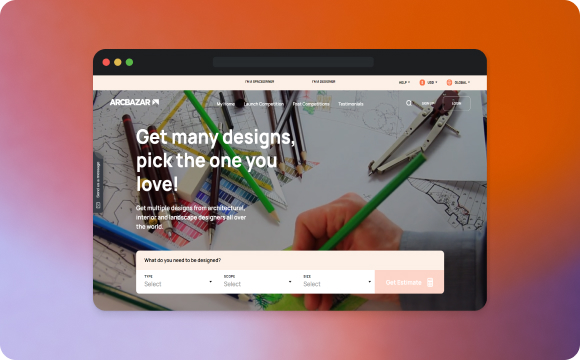
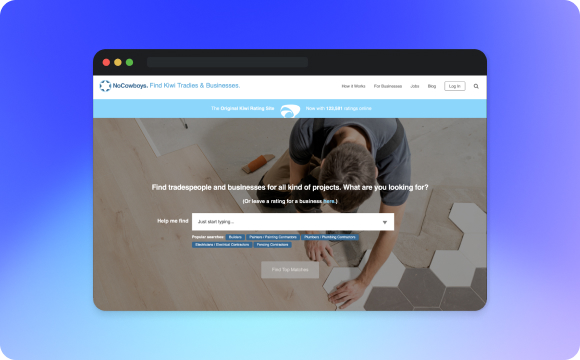



 Sign in with Google
Sign in with Google
Comments (0)